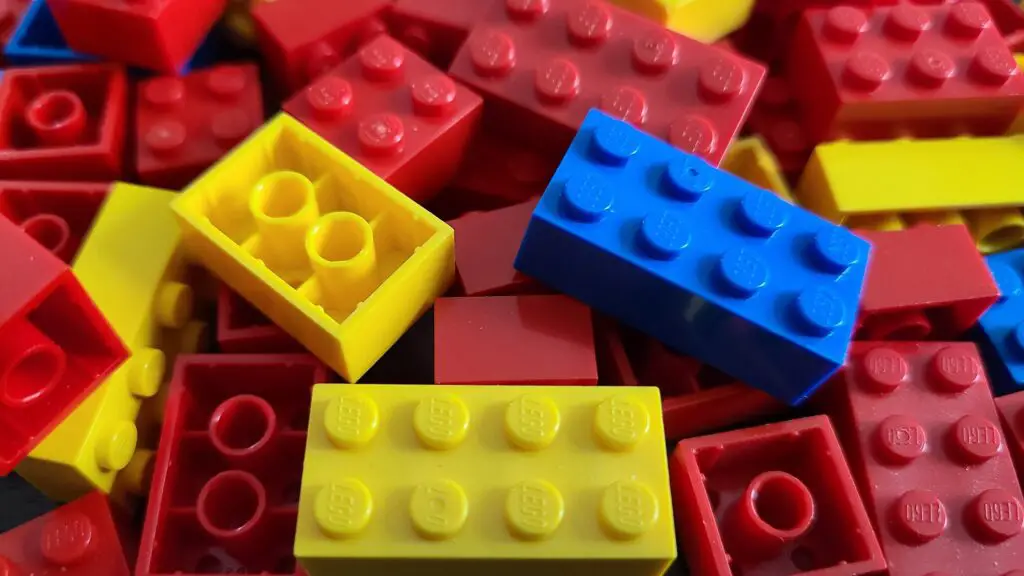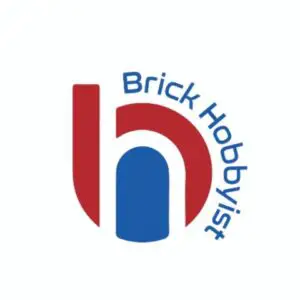
As an Amazon Associate, we earn from qualifying purchases. Thank you for supporting our website!
If you’ve ever tried to take a LEGO brick off of a surface and it just won’t come up, you’ve experienced clutch power. This is because there are small holes in the bottom of each LEGO brick with a ridged design that holds the bricks together.
LEGO bricks stick together because of something called clutch power. LEGO clutch power occurs because of a series of evenly spaced tubes on the inside of each brick. These tubes interlock with studs on top of other bricks to firmly connect the bricks together. The studs firmly wedge in between the tubes to create a firm connection to enable bigger and better builds.
The clutch power of LEGO bricks is one of the reasons why they’ve been popular for over 90 years and continue to be one of the most popular toys in the world. With clutch power, there’s no need to worry about your structure toppling over!
Table of Contents
Is The LEGO Design Patented?
The LEGO design is protected by patent No. US3005282A which was applied for on January 28, 1958, by Godtfred Kirk Christiansen. The patented stud and tube principle is what creates clutch power.
The patent drawings show that LEGO bricks have six studs on the top surface, two at each end and one in the middle. The patent states that this arrangement allows the bricks to be attached to each other in any direction. The patent also covers the use of tubes, with bumps on the inside, to connect LEGO bricks. This invention allowed LEGO to create more complex models than were possible with traditional building blocks.
The patent has been challenged a number of times over the years, but it has been held up in court. On November 17, 2005, LEGO lost a patent infringement case against Mega Bloks. However, the judge, in that case, ruled that Mega Bloks had not infringed on the patent because their bricks were different in shape and size.
The LEGO patent is set to expire in March 2016. This means that other companies will be able to produce building blocks that look similar to LEGO bricks, but they cannot call them LEGO bricks or use the patented connection system. LEGO has already announced that it plans to renew the patent when it expires.
Is LEGO Design Still Patented?
The patent for their Interlocking Building Bricks, also known as LEGO bricks was first filed on October 24th, 1978, and granted on January 15th, 1979 ( patent number US3005282A ). The patent was created to protect the building blocks from imitators but expired over 30 years ago.
30 Year Patent
One of the most common misunderstandings about patents is that they last for a specific number of years. This is not always the case. A patent’s lifespan is measured from the earliest patent application filed in order to get that patent. The patent for LEGO bricks was first filed in 1978 and granted in 1979, so its lifespan was 30 years.
In October of 2009, LEGO announced that it would not renew the patent on its building blocks. The patent expired in 2009 and other companies are now legally allowed to make interlocking bricks that look like LEGO bricks (although there are already a few lawsuits pending).
The expiration of the patent does not mean that LEGO is no longer a successful company; it just means that they can no longer monopolize the market by patenting their bricks.
Should You Glue LEGO Together?
There are a number of things to be considered before deciding to glue legos together. A benefit is that it will ensure a Lego piece is not lost or misplaced.
However, if the pieces will be frequently taken apart and put back together, gluing may not be the best option as it can make it difficult to separate them again.
Glue can also be helpful in preventing pieces from falling off of a structure during play. For example, if you’re creating a tower, you may want to apply glue to the topmost brick to keep it in place.
The LEGO Group does not recommend using glue on LEGO pieces as it may cause them to change shape. If you do decide to glue your LEGO bricks, then the glue should only be used on the inside of the bricks, not on any surfaces that will connect with other bricks. For example, if you want to glue two bricks for an archway, apply the glue only to the interior corners that touch each other. This ensures there won’t be any residue on the other surfaces that will come into contact with other bricks and make them difficult to remove.
If you do choose to glue your LEGO bricks, a good option is a glue specifically designed for gluing LEGO called Le Glue. It is a good temporary and non-permanent way of achieving this. This product is also non-toxic and safe for children and pets. Check out the latest price on Amazon.
If you ever want to separate the bricks then, just place them in warm water and pull them apart. Any residue is easily removed with soap and water. Le Glue will not damage the bricks and you do not need to use harmful acetone to dissolve the glue which can also damage the bricks.
So should you glue legos together? It depends on your needs and what you plan to do with them. If you want extra security or stability, then glue them together. But if you anticipate taking them apart often, then gluing may not be the best option. Ultimately, it’s up to you!
Final Thoughts
There are many reasons to love LEGO, but the most popular is that they stick together. This clutch power was created by a patented stud and tube principle that Godtfred Kirk Christiansen applied for in 1958. The patent expired in 1978, meaning other companies can now produce building blocks that look similar to LEGO bricks (although there are already a few lawsuits pending).
This invention allowed LEGO to create more complex models than were possible with traditional building blocks. It also allowed a much more enjoyable building experience, otherwise, it would be a lot more frustrating experience if the bricks did not stay together as well as they do due to the clutch power!
